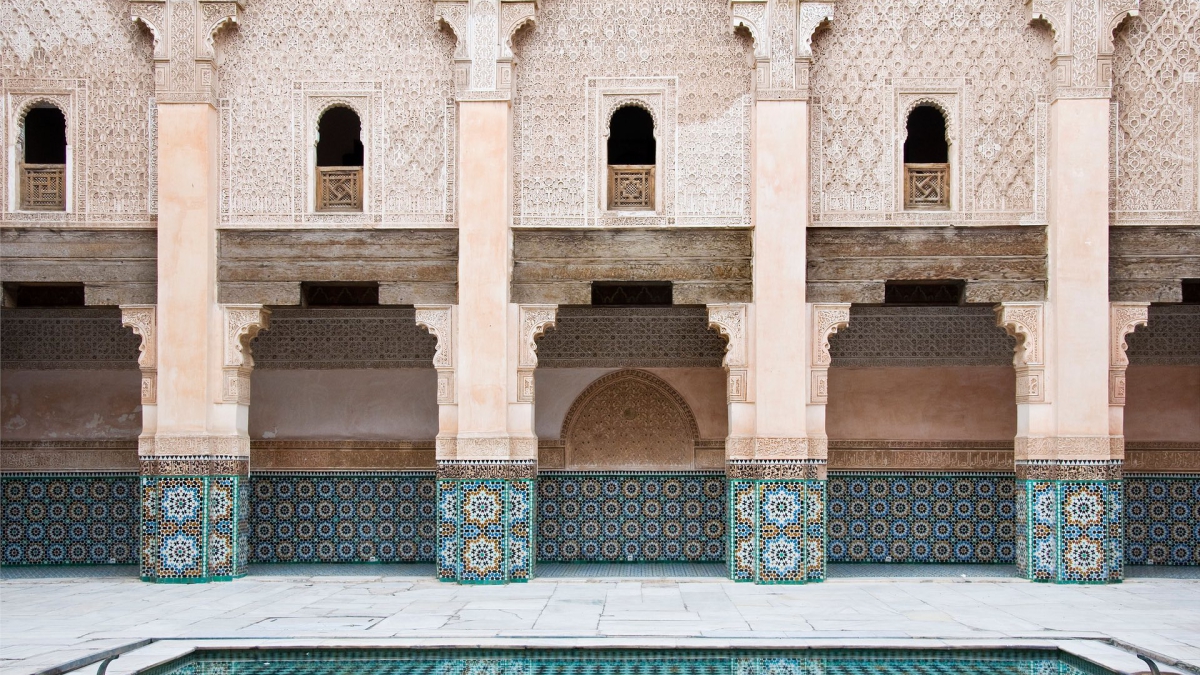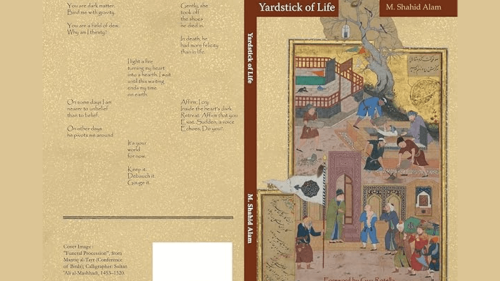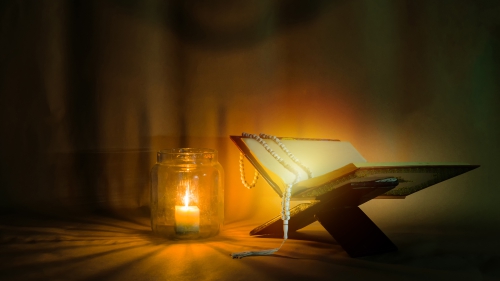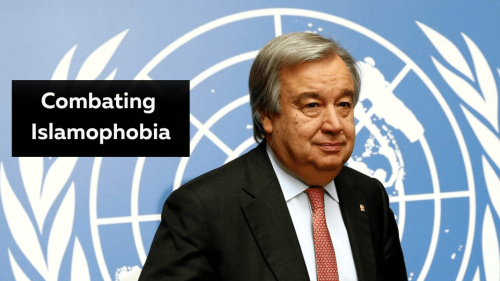The beauty of art can counter Islamophobia – but it won't be easy

What kind of Islamic art has the power to open American hearts and minds, at a time when Donald Trump has relaunched his attempt to ban entry from several Muslim-majority nations?
In May, a new Institute of Arab and Islamic Art, set up by Qatar’s Sheikh Mohammed Rashid Al-Thani, will open in downtown Manhattan. The timing is not accidental. Al-Thani is trying to humanise Islam and broaden perceptions of it in the US. He hopes the institute will “not only showcase the breadth of art and culture from the Arab and Islamic worlds, but also challenge certain stereotypes and misconceptions that hinder cross-cultural understanding”, he told the Art Newspaper.
Some hope, you may say. The depth of prejudice flaunted by Trump (and apparently shared by many of his voters) is so aggressive in its refusal to engage with a complex world that it seems unlikely to be healed by a bit of Islamic art in New York. Surely that’s the wrong location, anyway – the hearts and minds that need opening are hardly those of Manhattanites who voted Hillary.
Yet that’s too pessimistic. If there is one thing that can communicate across every border and cultural gap it is art. Where words define and definitions divide us, visual art is open, ambiguous and allows imaginations to wander in time and space. Looking at Islamic art allows non-Muslims to feel the inner beauty of beliefs and traditions we do not share, to look with “another heart / And other pulses”.
Islamic art beckons me with its beauty. The Alhambra in Granada is the most enrapturing place in the world, a palace of dreams where ethereal intricacy of design, and craftsmanship of quiet genius, turn brightly lit rooms into caverns of delight. Crystalline ceilings and harmonious tiles glitter everywhere you look, illuminated by windows filled with the Andalusian sky. It is truly like being on a cloud halfway between heaven and Earth.
Of course, it is not possible to put this medieval building in an art gallery. It is very difficult to capture the wonder of any Islamic art in a gallery. The rich, subtle weave of decorative patterns and textures that makes the Alhambra so seductive is, in fact, typical of many of the greatest Islamic artistic achievements. All-embracing abstract design, rather than the iconic “masterpiece” tradition of western art, is what gives Islamic marvels from Isfahan to Cordoba their magic. The best advice is to go to these places. A couple of days in Marrakech would do wonders for any Islamophobe – visit the gorgeous Ben Youssef madrasa and feel the warmth and gentleness of the city that surrounds it.
So the task of an Islamic art gallery is not so much to display masterpieces as to find a way to connect them in a living flow of colour and pattern that gets across the multidisciplinary ecstasy of these places. One place that does this very well is the V&A in London, which uses low lighting and aesthetically harmonious arrangements to unify ceramics, rugs, architectural fragments and calligraphy in a serene, entrancing installation. Islamic art is emotional; it changes your relationship with space and time. To open American minds, the Institute of Arab and Islamic Art needs to replicate that sublime psychological effect. It should be like wandering into the old part of an Arab city: less a museum than a medina.
Some Islamic art is more effective than others. If I was creating a dream collection, I would concentrate on the medieval caliphate of north Africa and Spain, where art reached the sumptuous yet reserved heights of delicate beauty that can still be savoured in Morocco and Andalusia. For instance, the minaret of the Koutoubia mosque in Marrakech is identical to the former minaret that is Seville’s cathedral bell tower. They were both built by the 12th-century Almohads. The abstract glory of north African and Andalusian art can still be savoured in portable works, though. A wooden minbar – or pulpit – carved in the medieval Moorish style would be the most enchanting object this new gallery could show.
Art being made today shares the liberating effects of medieval Islamic creations. It has been rumoured – although the IAIA says it has not yet announced its future collaborations – work may be shown by Mona Hatoum that dramatises global tensions. But is her work likely to change how Americans see Islam? I would recommend it display the much more utopian, visionary art of Waqas Khan. His huge and intricate abstract drawings share the ethereal freedom of the greatest Islamic art. Here is an artist to change your mind, your soul.
Then again, America has never lacked cultural curiosity. In the 19th century, Washington Irving wrote Tales of the Alhambra and Edgar Allan Poe raved about the intoxication of “arabesques”. Khan’s work not only evokes medieval Islam but American minimalism, too – for there are close affinities between the American feel for abstract art, from Jackson Pollock to Donald Judd, and the Islamic world, where art always has been largely abstract.
So we come back to the basic problem. The US already has great museums full of liberal good intentions. The problem is that Trump has appealed to the worse angels of our nature, and they have howled acclaim. How can beauty help when voters have shown they prefer the beast?
( Source: Guardian )
Topics: Islamic Art And Architecture, Islamic Culture And Civilization, Islamophobia
Views: 2464
Related Suggestions
















